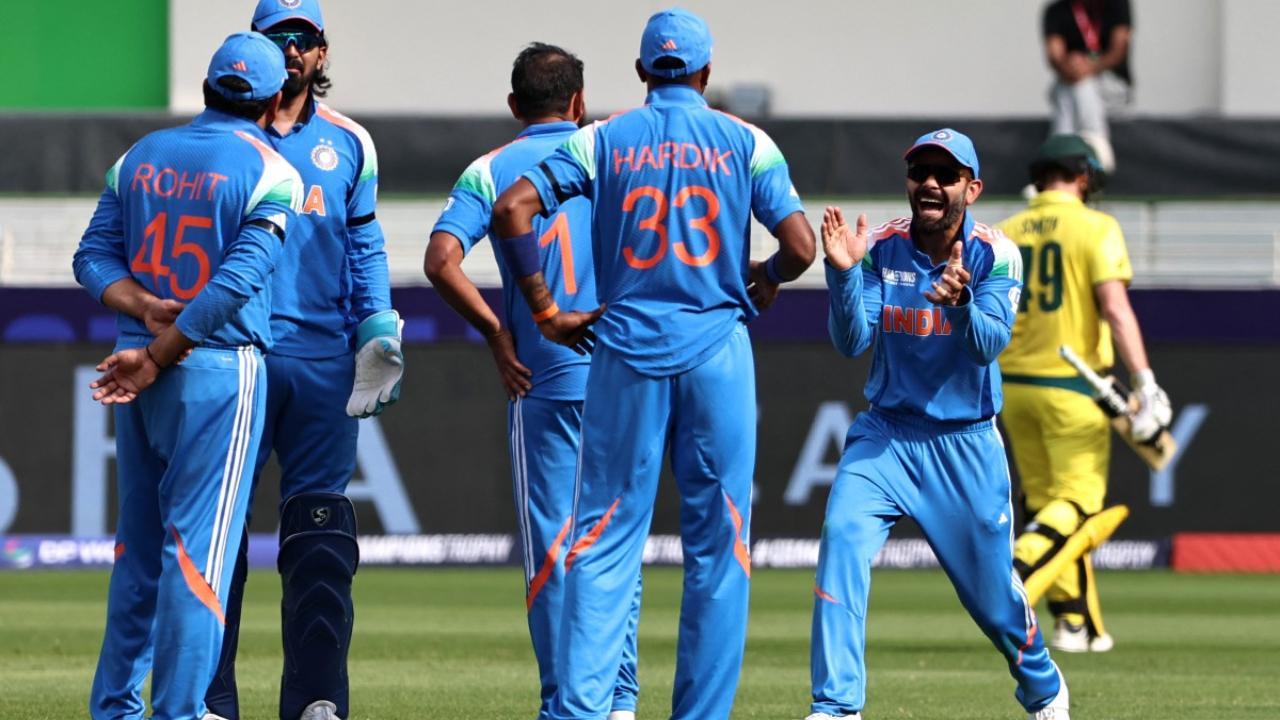India’s choice not to include Harshit Rana or Arshdeep Singh alongside Mohammed Shami in the playing XI was primarily driven by the conditions at the Dubai International Cricket Stadium

Virat Kohli gestures after the fall of an Australian wicket during the first CT 2025 semi-final (Pic: AFP)
The first semi-final of the Champions Trophy 2025 will be remembered for India's bold decision to field a lineup with just one specialist fast bowler in a knockout match. Notably, this is the first time in 97 years of international cricket that India has opted for such a combination in either a semi-final or final of an ICC event.
ADVERTISEMENT
When specifically considering ICC ODI semi-finals and finals, this marks only the fourth instance of a team fielding fewer than two pacers. Interestingly, the first two such instances occurred during the initial editions of the Champions Trophy in 1998 and 2000, respectively. Over a decade after these rare combinations in Dhaka and Nairobi, Sri Lanka became the first team to field only one specialist fast bowler in a World Cup semi-final.
In their 2011 World Cup semi-final against New Zealand in Colombo, Lasith Malinga was the only pacer in the XI. This remains the only instance of a team playing a World Cup semi-final or final with just one dedicated fast bowler. However, such a strategy has been employed seven times in the final stages of ICC T20 World Cups over the years.
|
Team |
Opposition |
Occasion |
Venue |
Result |
|
South Africa |
West Indies |
ICC Champions Trophy 1998 Final |
Bangabandhu National Stadium |
Won by 4 wickets |
|
Pakistan |
New Zealand |
ICC Champions Trophy 2000 Semi-final |
Gymkhana Club Ground |
Lost by 4 wickets |
|
Sri Lanka |
New Zealand |
ICC Cricket World Cup 2011 Semi-final |
R Premdasa Stadium |
Won by 5 wickets |
|
India |
Australia |
ICC Champions Trophy 2025 Semi-final |
Dubai International Cricket Stadium |
TBA |
Did playing one specialist pacer help India on Tuesday?
India’s choice not to include Harshit Rana or Arshdeep Singh alongside Mohammed Shami in the playing XI was primarily driven by the conditions at the Dubai International Cricket Stadium. Having secured a convincing victory with four spinners in their previous league match against New Zealand at the same venue, it was a strategic move for captain Rohit Sharma to stick to a winning combination, acknowledging the importance of adapting to the prevailing conditions.
Despite some criticism, especially given the fresh pitch, India’s decision to play with only one pacer can be considered justified, as they managed to bowl Australia out for 264 in 49.3 overs. As for the pitch, it did not offer significant turn, nor did it provide substantial assistance to fast bowlers.
For a clearer picture, Shami and all-rounder Hardik Pandya posted combined bowling figures of 15.3-0-88-4, while the four spinners, on the other hand, bowled 34 overs for 176 runs, taking 5 wickets at an economy rate of 5.17.
Though the run chase will not be straightforward, India’s batters will need to overcome these challenges if they are to secure the silverware.
 Subscribe today by clicking the link and stay updated with the latest news!" Click here!
Subscribe today by clicking the link and stay updated with the latest news!" Click here!







